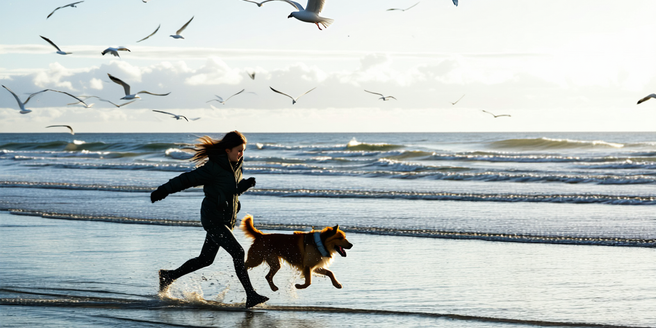
Understanding Cold Fronts and Weather Patterns
Cold fronts occur when a mass of cold air moves into a region, often leading to a rapid drop in temperatures. These fronts are characterized by a distinct boundary between the cold and warm air, leading to weather changes like rain, thunderstorms, and gusty winds. Meteorologists use tools like satellite imagery and radar to track these fronts, helping predict their impact on temperature and weather. Understanding these patterns allows dog owners to prepare for the sudden temperature shifts that accompany cold fronts. As these fronts can cause notable fluctuations in weather, they can impact outdoor activities and necessitate extra care for pets, particularly dogs. Recognizing the elements that signify a cold front, such as sudden wind changes and cloud formations, can help in planning accordingly to protect pets.
How Cold Weather Affects Canine Physiology
Colder temperatures can have several effects on a dog’s physiology. Just like humans, dogs can experience a decrease in body temperature, leading to potential issues like hypothermia. In response to cold weather, dogs may expend more energy trying to maintain their body heat, which can affect their overall energy levels and dietary needs. The cardiovascular system can also be affected, as colder temperatures can lead to constricted blood vessels, increasing the heart’s workload. Furthermore, cold weather can exacerbate existing health conditions such as arthritis, making it important for dog owners to be vigilant and proactive. Ensuring that dogs have adequate shelter, warm bedding, and proper nutrition is crucial during cold weather, as their bodies work harder to cope with the environmental changes.
Identifying Signs of Cold Stress in Dogs
Cold stress in dogs can manifest through various signs which owners should be vigilant in spotting. One of the first indicators is shivering, an involuntary response to generate warmth. Dogs experiencing cold stress may also present with a cold tail, paws, or ears, signaling impaired circulation due to cold exposure. Behavioral changes such as anxiety, reluctance to move, or seeking warmth excessively can also suggest discomfort from the cold. Lethargy or weakness might occur if the body is working overtime to maintain core temperature, and in severe cases, hypothermia. Observing changes in a dog’s movements, like stiffness or reduced alertness, can further indicate cold stress. Promptly addressing these signs by providing warmth, shelter, and potentially consulting a veterinarian ensures the dog remains safe and comfortable during cold conditions.
Winter Health Risks Associated with Cold Fronts
During cold fronts, various health risks can affect dogs if precautions aren’t taken. Hypothermia and frostbite are primary concerns, as prolonged exposure to cold can lead to dangerous drops in body temperature and damage to extremities. Cold weather can also exacerbate existing respiratory issues, as the chill can be difficult for some dogs to breathe comfortably. Salt and chemicals used for ice treatment on pavements can irritate or harm a dog’s paws, potentially leading to cuts or infections. Furthermore, ingestion of antifreeze, often leaked from cars during these months, is a serious risk due to its toxic nature. Moreover, reduced energy expenditure can lead to weight gain if not properly balanced by diet adjustments. Being mindful of these risks enables dog owners to take preventive measures, ensuring their pets remain healthy through winter.
Tips for Protecting Your Dog During Cold Fronts
Protecting your dog during cold fronts involves a few strategic steps to ensure safety and well-being. First, always monitor weather forecasts and limit outdoor activities during extreme cold. Ensure your dog has adequate shelter that is insulated and elevated to prevent contact with frozen ground. Providing a warm bed with blankets helps maintain body heat when temperatures drop. Keep walks short and consider using paw protectors or boots to shield from ice and salt. Maintaining hydration is crucial, as dehydration can occur even in cold weather. Adjust feeding routines to match energy needs, potentially increasing food if your dog utilizes more energy keeping warm. Groom their coat adequately; while a longer coat can provide insulation, excessive fur may lead to matting. Lastly, regular vet checks ensure your dog is cold-weather ready.
